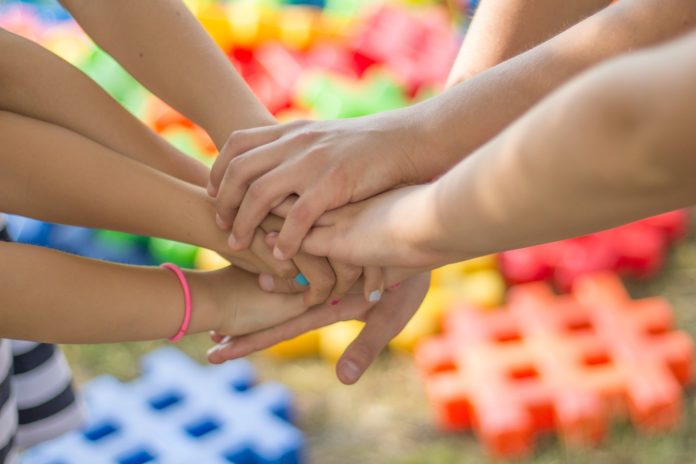Many Canadian adults have childhood memories of learning their times tables in math class, and even doing timed trials in the form of multiplication drills. But kids who learn to multiply through rote memorization can lose out on an important way of thinking that is a major predictor of future success in math.
Mathematical reasoning goes beyond memorization and helps students master the concepts behind the symbols. Many students come to understand multiplication as a series of repeated additions; this gives the same answer, but it doesn’t help students grasp that multiplying by two represents doubling, or that two numbers can be multiplied in any order.
A hands-on approach to learning multiplication
Kids love learning to count on their hands, and keeping track of numbers like this is deeply entrenched in our culture. It’s the reason why our entire numbering system has a base of 10 for each of our 10 fingers, and even why we sometimes call numbers ‘digits’ — another word for fingers.
Multiplication is more complicated, but that’s where the TouchTimes app can help. Developed at Simon Fraser University by mathematics educator Nathalie Sinclair and software designer Nicholas Jackiw, TouchTimes helps kids learn multiplicative thinking using a gesture-based game. Using their hands and fingers, they are free to explore how multiplication works.
Many math games are rooted in repetition, with level- and reward-driven experiences, but TouchTimes is different. It’s an open-ended experience that encourages self-guided inquiry through movement and touch. It expands the representational power of a user’s fingers, making the abstract concepts of multiplication more tangible.
“We wanted to create mathematical experiences that use and develop young learners’ natural ‘embodied cognition’ — the motor skills enable their understanding and promote their engagement,” said Sinclair in a press release. “This approach builds on decades of research showing how important body movement, especially gestures, are to mathematics learning.”
Research in education and neuroscience show that physical activity and mental manipulations are connected. In other words, movement helps people think, especially when concepts are abstract.
TouchTimes helps students transform the fingers on one hand into multipliers of the fingers on the other. Instead of focusing on results, the app calculates the answers and lets students focus on how multiplicative relationships work. The physical experience is coupled by the on-screen representation of the equation.
In Grasplify mode, students start by tapping fingers on one side of the screen, and each finger activates an on-screen dot, called a pip, at each fingertip. If a student chooses to tap the other side of the screen with, for instance, three fingers, each fingertip holds a ‘pod’ of the number of pips activated on the first side; this demonstrates that multiplication can triple the final number of pips, instead of thinking of it as a serial addition operation.
The app is interactive, so as students adjust how many fingers are touching the screen, the number of pips and pods updates in real time.
In Zaplify mode, fingers activate lightning bolts. Placing fingers from one hand on a vertical edge of the screen and the other on a horizontal edge, the bolts from a pair of hands interact to form a grid. Where the lightning bolts meet, orange sparks appear, representing the product of the two values. The symmetry of the grid representation helps explore the concept that two numbers can be multiplied in any order and still give the same result.
The visual nature of the app helps students spot patterns. Instead of a single pre-determined result to a question like 6 × 2, students might be asked to find different ways to get a product of 12, or the largest product they can make using 10 fingers. Not limited to a single pair of hands, the app can also be used in small groups.
Movement helps kids work through abstract thinking. Understanding the abstract concept of multiplication opens the possibility for students to understand more complex equations down the road and apply them to real-life problem solving.
Want to learn more about the influence of movement on learning? Check out our post on how learning cursive writing enhances literacy.








































